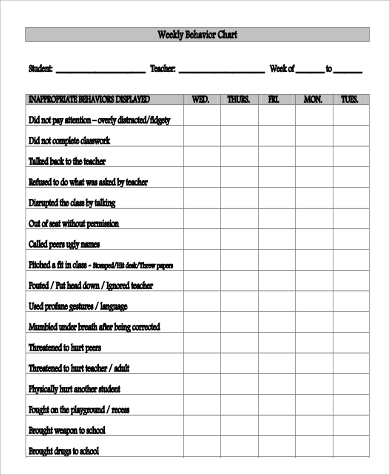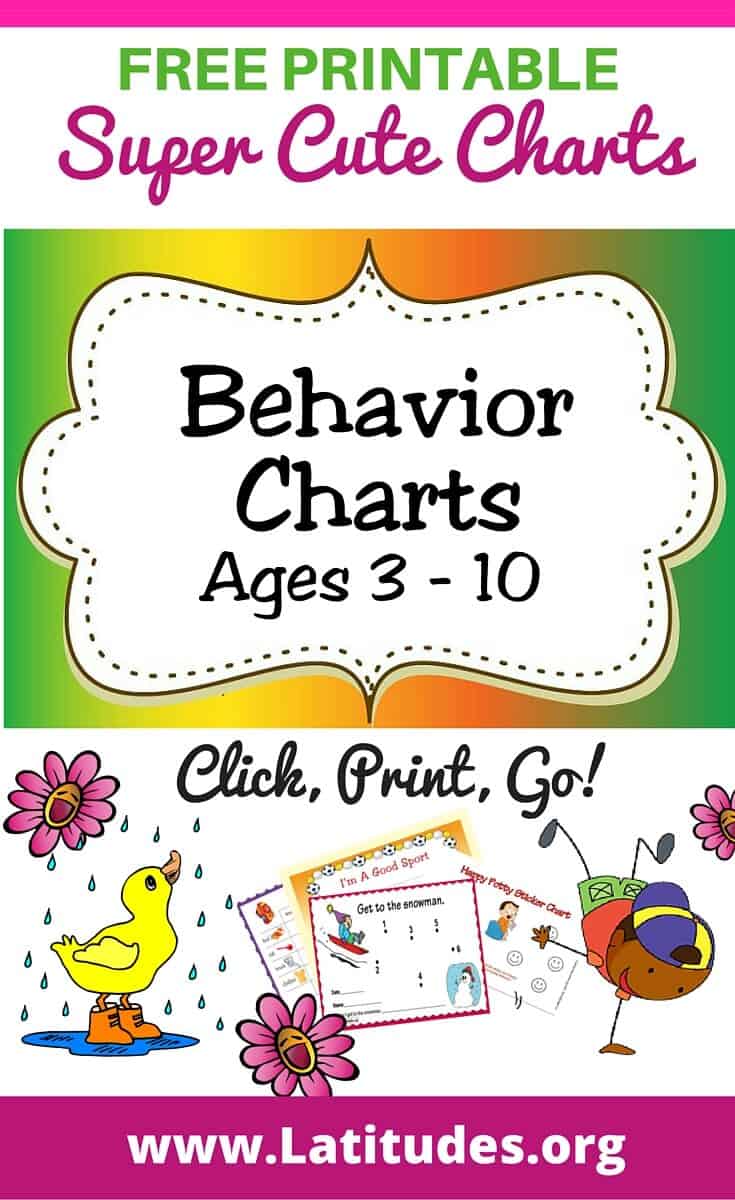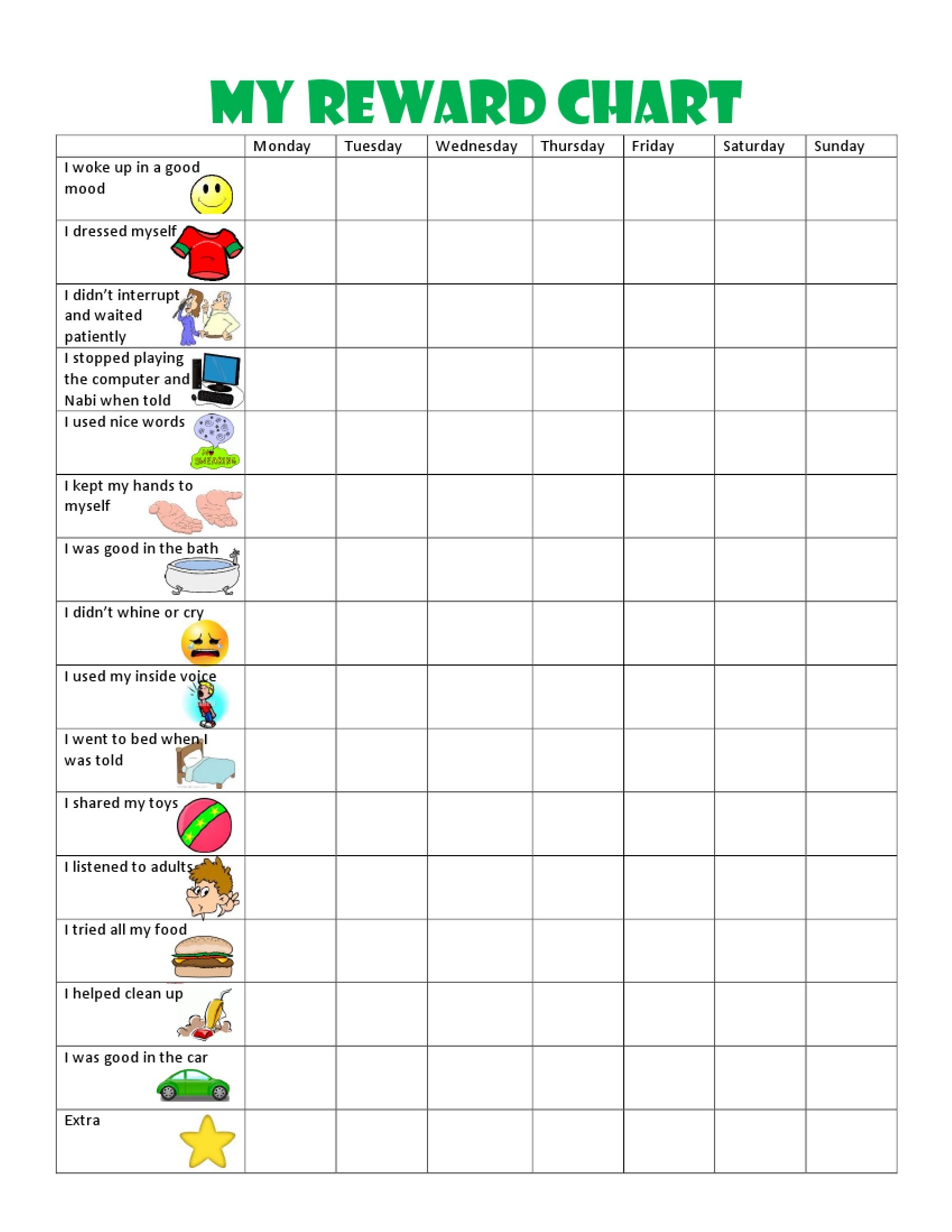Printable Behavior Charts to Motivate Your Kids Positively
If you’re looking for a fun way to encourage positive behavior on your children at home or your students at school, then printable behavior charts are the right and wonderful to use. Both behavior chart and reward chart are very useful to keep track on difficult behaviors, homework, daily routines, chores, potty training, and so on.
Behavior Charts Definition
Printable behavior charts are the type of chart that is used to set a specific purpose, with a clearly displayed goal, marking tools such as stickers or stars, as well as rewards when the kids are successfully reach the behavior goals. It is very effective to reinforce new mannerism, to make them remember to do homework or chores, and generally discourage behaviors and encourage positive ones instead.
The power of both positive and negative reinforcement has been known to psychologists. A behavior is more likely to be reoccurred if it is followed by rewards as positive reinforcement. As opposite, a behavior is less likely to reoccur it is followed by punishment as negative reinforcement.
How to Use It for Kids
To make sure that the printable behavior charts are working effectively, below are some tips you can apply during the process to reach the goal.
- Make it fun and positive
Remember that you do not want to emphasize negative behaviors, but the positive ones. Make sure that you involve your kids and let them giving input regarding the behavior chart.
- Apply consistency
Once you committed to the chart, follow it thoroughly. If it’s a daily chart, then fill the chart daily, and so does for weekly or monthly chart.
- Set realistic expectation
Create the chart with attainable expectations. If it’s too unrealistic, it could become a frustrating experience for both you and the kids.
- Start from small reward
It is best to use simple rewards that the kids can enjoy frequently. The best reward types are family bonding activities such as special outing, art project, or cousin’s sleepover.
- Remember it’s okay if it’s still imperfect
Even if the chart doesn’t seem to work well on affecting the kids’ behavior, it’s totally okay! The most important thing is the chart is finished up with good effort.
Behavior Charts Types
There are four behavior chart types and the reward system to successfully change and track the kids’ behavior:
- Stick chart
Typically used to enforced specific positive behavior on kids. Put a sticker on the chart each time the child managed the particular behavior.
- Routine chart
Make a desirable routine schedule for the kids. It may include morning, evening, or after-school routine like brushing teeth, doing homework, or other tasks.
- Chore chart
List a set of chores and keep daily track if the kids had performed each one. It can be chores like cleaning room or making bed.
- Periodically behavior chart
It can be a daily, weekly, or monthly chart where you integrated one or multiple behaviors you want the kids to work on.
Printable behavior charts will make sure that the kids do better because they have written goals clearly. It gives the goal visual representation for the kids, and provides effective way to monitor the progress for you.

Otherwise, discuss how the behavior needs to be modified. If not, discuss how you should change for the next week. Get more information on how to get the right behavior from any staff that is available.
A behavior chart should be a resource for parents to help their children learn how to behave appropriately. The ADHD behavior charts must contain certain tasks, final objectives and expectations. The ADHD behavior charts should be kept simple so that the child can easily understand them.
Behavior tables work best if they are made especially for each child. Child behavior charts are extremely useful, as they motivate children in a positive way to maintain decent behavior. There are a lot of child behavior tables to choose from.
Make a table for yourself if necessary. After that, you can determine the best way to complete the picture and ask the children to play fairly. Behavior charts for absolutely free printing are often used to help children overcome common behavioral problems.
Your child should still have respect for different adults who may want to intervene when you are not around. Each child is different, and what is surprisingly excellent for one child can be average behavior for the other. Children will quickly learn what will happen every day. It is possible that the young person is not in a position to progress in this type of situation because they are not being exposed to any new experience. In the event that children eat exactly the same type of food during snack time at school, there is no reason why some children are looking for different foods. If you are writing, the defiant child suddenly says: “This is hard to do”.
Get an idea of ??what you would like to do and after that talk to the child about it. The ideal way to make a child do the right thing and maintain good behavior is through a reward system. Children have the ability to learn at a rapid pace and want and need to learn new details. If your son or daughter still can not read, you can draw small pictures like a child who brushes his teeth. If the table is about a bedtime routine, he or she will earn the reward the next day. As he or she consistently meets the goal, you can increase the goal a little bit or you can choose to celebrate together and then choose another set of behaviors to focus on. It is essential that a young person learns early that the world does not just revolve around him, and helps the child learn that we live in a multicultural society filled with many unique types of individuals.
Not all children respond exactly to the same consequence in the same way. They will be able to see how well they are doing simply by looking at the points in the pictures and will make them think for themselves. Your son or daughter will not spend the rest of his life in therapy. The child will probably calm down on his own. Communicate clearly how many stickers you will need to achieve your goal. He or she learns the routine and expectations and begins to wait for the next activity. He or she learns to take responsibility for their actions.
printable behavior charts

Free Printable Behavior Charts for Teens and Tweens.

